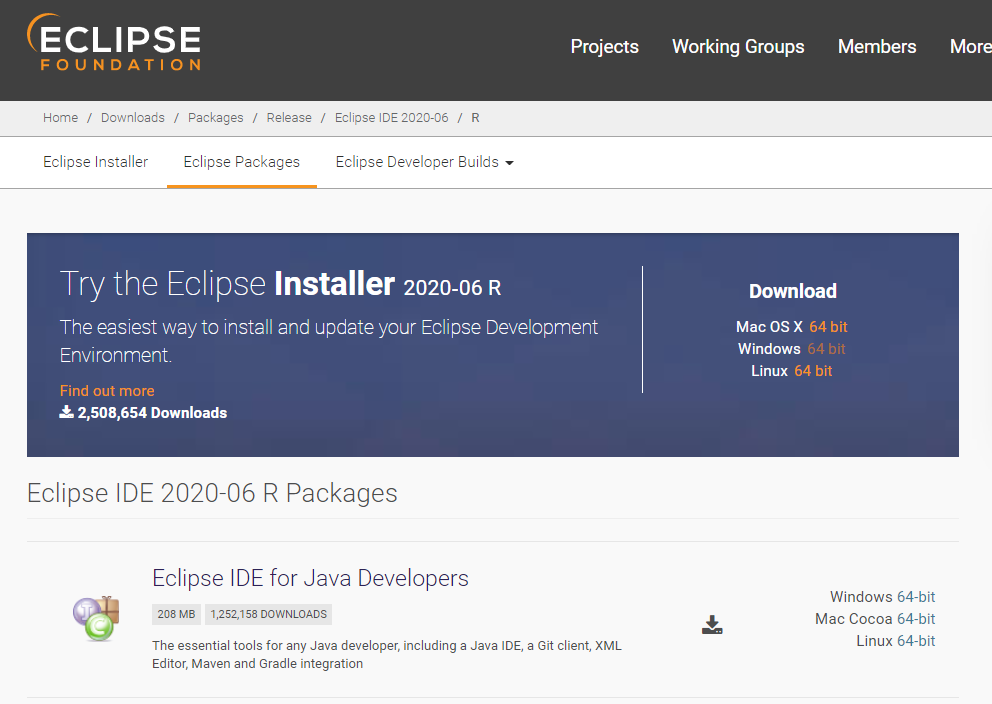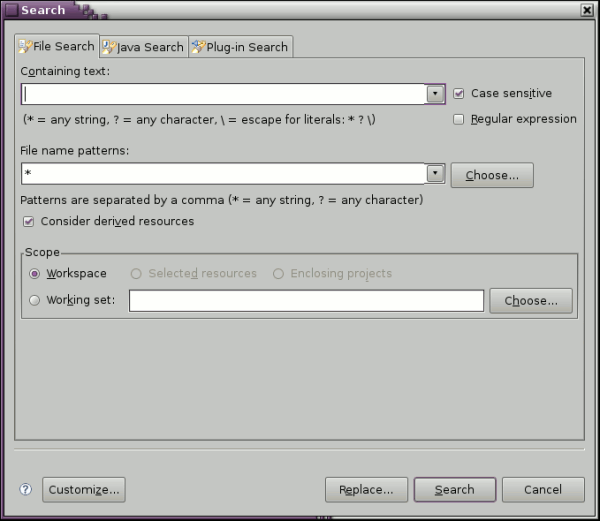
- HOW TO SEARCH MULTIPLE FILES IN ECLIPSE HOW TO
- HOW TO SEARCH MULTIPLE FILES IN ECLIPSE UPDATE
- HOW TO SEARCH MULTIPLE FILES IN ECLIPSE SOFTWARE
- HOW TO SEARCH MULTIPLE FILES IN ECLIPSE LICENSE
HOW TO SEARCH MULTIPLE FILES IN ECLIPSE LICENSE
When you complete the previous step, you’d see a license agreement, select Yes to accept it, and proceed to the final step. Now that we have given our project a name and have selected its runtime, we only have to do a few formalities to start our Eclipse dynamic web project. Once done, click the ‘Finish’ button, and this still will finish. Please select it and click on Bind to bind the selected Java version to the runtime.

You’d see the Apache Tomcat v5.0 appear in the ‘Runtimes’ section. In that case, select Next to head to the Project Facet page and choose Java version 1.4 there. However, it is possible to have the Target runtime field blank. Click the Finish button to proceed to the next step. In this case, you don’t have to choose any Target runtime.
HOW TO SEARCH MULTIPLE FILES IN ECLIPSE SOFTWARE
If you had installed Tomcat 5.0 previously, and the default workbench JRE is JRE 1.4, the software would select Apache Tomcat v5.0 as the default Target runtime. So you’d have to click on ‘New’ and get the required Target runtime. In this case, the Target runtime field wouldn’t have any option configured automatically. All of them require different steps.įirst, let’s discuss the situation where you don’t have the server runtime installed. There are three possibilities in this section: you may have the server runtime installed, not installed, or the field might be blank. Before selecting the ‘Finish’ button, you first have to take care of the Target Runtime. Now you’ll see a menu pop up where you have to enter your project name. Now select ‘Next’ to proceed to the next step. Select ‘New’ there and choose the dynamic web project option there.
HOW TO SEARCH MULTIPLE FILES IN ECLIPSE HOW TO
Read: Java Project Ideas & Topics How to Launch a Dynamic Web Project in Eclipseįirst, we’ll start Eclipse and switch to the Java EE perspective.Ĭlick on the ‘File’ button, which will show you a menu. Dynamic web projects allow you to manage more information and create complex and advanced websites. It would be best if you chose dynamic web projects over static web projects because of these facilities. Dynamic web projects offer many advantages over static web projects as they can provide more information and functionalities. They have a lot of focus on server-side development. This keeps them simple and relatively easy to modify but restricts their functionality substantially.ĭynamic web projects have more advanced components, such as Java, PHP, ASP, etc. They don’t have external files or databases. They only have essential web development components, such as HTML and CSS. Static web projects don’t have Java and its related technologies (JSP, servlets, etc.).
HOW TO SEARCH MULTIPLE FILES IN ECLIPSE UPDATE
Both of these are easily done, and I’ll update this blog if/when I do that.

Second, search through all jar files in all sub-directories of the current directory. First, take the pattern you want to look for as a command-line argument instead of hard-coding it inside the script as I’ve done here.

To improve this script I recommend two things. This script can easily search dozens or hundreds of jar files if need be. I omitted a bunch of output there, but I hope you get the idea. This shows how I run this shell script, and the output from it: Sample output: jar files that match regex pattern The advantage of this script - if you’re a Unix, Linux, or Cygwin user - is that it will search through all jar files in the current directory: You can use it to search for the name of a class, the name of a package, or any other string/pattern that will show up if you manually ran jar tvf on each jar file. Here’s a Unix shell script that I use to search Java Jar files for any type of string pattern.


 0 kommentar(er)
0 kommentar(er)
